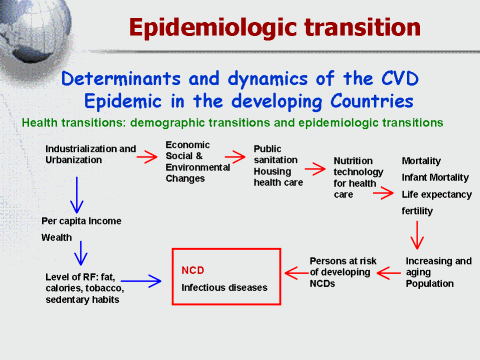| front |1 |2 |3 |4 |5 |6 |7 |8 |9 |10 |11 |12 |13 |14 |15 |16 |17 |18 |19 |20 |21 |22 |23 |review |
 |
There are
several factors that explain the recent emergence, and underlie the
projected escalation, of the CVD epidemic in the developing countries. First,
a global surge in life expectancy, especially in the developing countries.
Many more individuals are exposed to risk factors of CVD for sufficient
duration, for clinical consequences to manifest as a greater proportion of
the population survives into older decades. This epidemiological transition
due to changing demographic profiles and a decline in the competing causes
of death from infectious and nutritional disorders characterizes the
advent of the CVD epidemic, along with those of other chronic diseases. This
has been clearly demonstrated in urban China, where mortality attributable
to CVD increased from 86.2 per 100?000 (12.1% of total deaths) in 1957 to
214.3 per 100?000 (35.8% of all deaths) in 199012. Similar projections of a
demographic transition, and an accompanying rise in CVD burdens, exist for
India as well. Second, delayed industrialization and recent urbanization have been associated with alteration in living habits, with deleterious changes in diet, physical activity and tobacco addiction. These environmental changes lead to acquisition or accretion of risk factors. The increased dose of risk factor exposure, coupled to longer duration of exposure due to demographic changes, leads to an enhanced risk of CVD. In China, the Sino-MONICA study demonstrated that the body mass index (BMI), hypertension and blood cholesterol levels in the population, age group 3564 years, rose from 198486 to 198889. Yao C, Wu W, Wu Y. The changing pattern of cardiovascular
disease in China. World Health Stat. Quart. 1993; 46: 1138 |